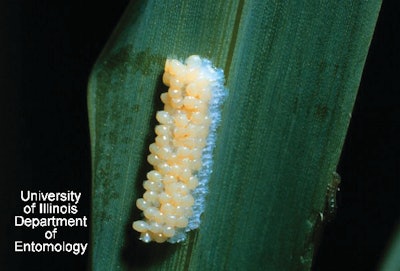
One of the many technical sessions at the 2014 Lawn Care Summit, Predicting & Diagnosing Turf Problems, was presented by John Sorochan, Ph.D., University of Tennessee. Here we offer highlights of Sorochan's discussion on how different types of insects can help you diagnose lawn care problems.
You can learn a lot about the type of insect damage, location of that damage, and time of year the damage is taking place. First keep in mind that insect damage will occur in one of three areas: the shoots, thatch and/or roots. Inspect all areas as you visit and treat properties.
There are some common signs that insects could be fixing to wreak havoc on a lawn. For instance, large numbers of birds feeding in a lawn might signal heavy surface-feeding insect presence. We're talking about things like armyworms, chinch bugs, cutworms and sod webworms. When these critters are present, you may also notice clouds of mouths hovering over the lawn, especially in the evening. The turf will eventually start showing a loss of green color even though the soil may still be moist. You may also start seeing frass (debris or excrement produced by insects) near the soil surface.
There are many benefits to leaving clippings behind when mowing. However, insect infestation is one good reason to remove clippings from a lawn when mowing. If you suspect insect presence, start bagging for a while.
Subsurface insects represent another challenge to lawns. Wonder why that mole, skunk or raccoon keeps poking around in a lawn? The dirty devil is likely after subsurface insects such as beetles, billbugs or white grubs. You may also notice that the turfgrass has become shallow-rooted, providing poor footing. Additionally, the lawn may start to show thinning and/or yellowing in areas.



















